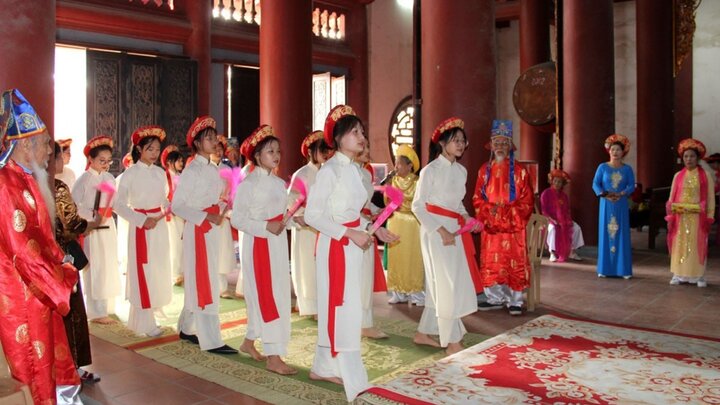1. About Quyen Son Dam Singing
1.1. What is Quyen Son Dam Singing?
Quyen Son Dam Singing (also known as Hat Dam) is a unique form of folk music and dance, associated with the traditional festivals of Quyen Son village, Ly Thuong Kiet ward, Ninh Binh province.

Unique features of the Dậm Quyen Son singing and dancing style. (Source: Collected)
This is a collective choral singing style involving six to ten people, combined with the sênh tiền percussion instrument used for accompaniment and rhythm keeping, as well as dance props. Call-and-response and duet melodies are performed alternately with simple yet highly expressive hand and foot movements. Currently, Dậm singing still preserves 38 melodies with profound humanistic meaning, which were once performed in the royal court as well as outside temple courtyards.
More than just an art form, Dậm singing is also the heartfelt voice of the people of Quyen Son offered to deities, expressing gratitude to the hero Ly Thuong Kiet. Therefore, those chosen to perform Dậm singing must adhere to strict regulations: they must be young maidens from the village, pure and innocent, to preserve the solemnity and sacredness of this traditional melody.
1.2. Formation and Development Process of the Dậm Singing Heritage
According to legend, after defeating the Chiem Thanh invaders in the South and returning, the renowned general Ly Thuong Kiet stopped at Forbidden Mountain (Nui Cam), Quyen Son village. Here, he held a feast for the troops to honor the officers and soldiers, and he himself taught the villagers the Dậm singing style.
Later, the people of Quyen Son built a temple to worship Ly Thuong Kiet, revering him as the village tutelary deity – the protective spirit who watches over the people. From then on, Dậm Quyen Son singing became intimately associated with the cult of worship and is the soul of the Bamboo Temple (Den Truc) festival held every spring. Whenever the season changes, the melodies resonate like prayers for favorable weather, peaceful life, and prosperous harvests.
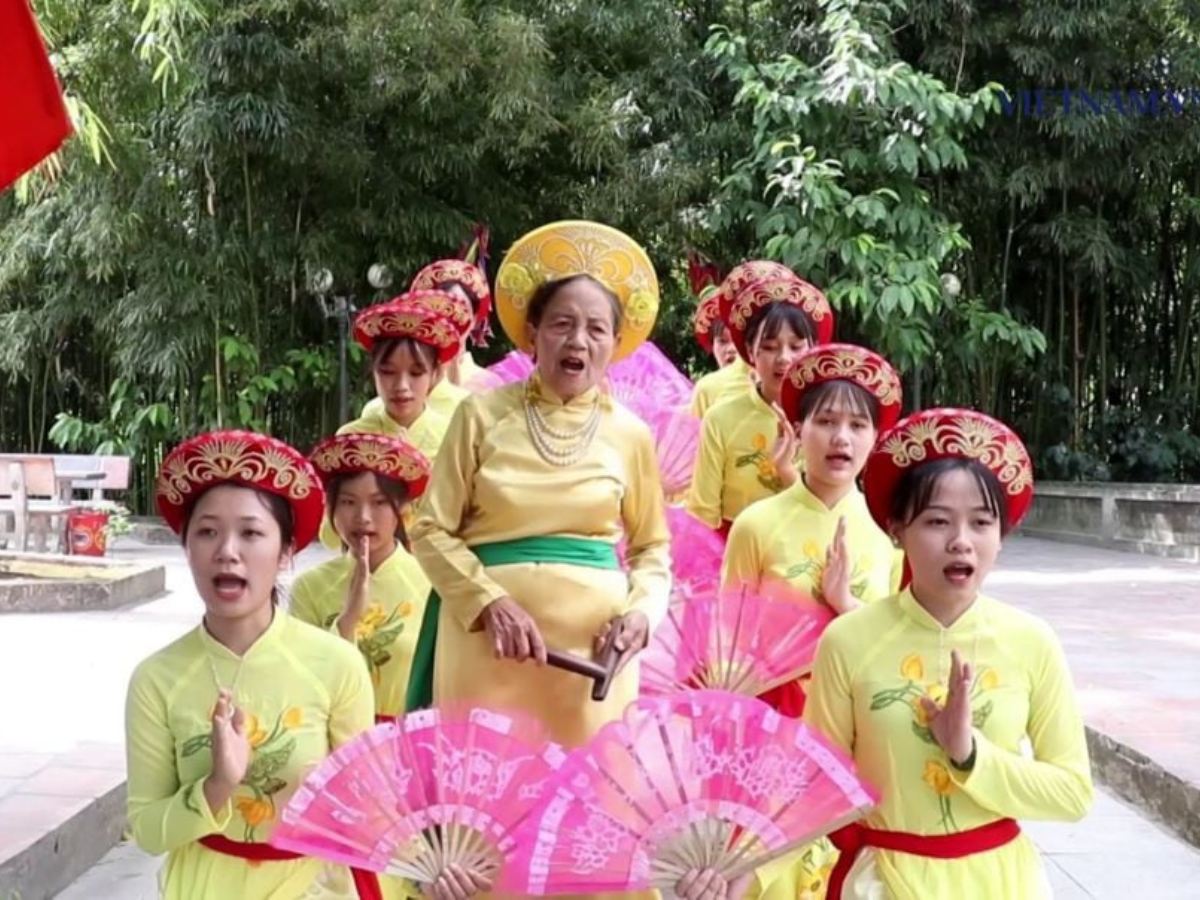
Preserve and promote the Hat Dam Quyen Son singing style. (Source: Collected)
During its development, there were times when Hat Dam Quyen Son singing was "interrupted", but with love for their homeland's heritage, the elderly and the local people have strived to restore it. Today, Hat Dam Quyen Son singing has been included in the National List of Intangible Cultural Heritage.
1.3. The spiritual significance of the festival and the role of "singing to worship deities"
Entering the sacred space of Truc Temple during festival days, visitors can easily feel that Hat Dam Quyen Son singing is the "soul" of all rituals. This is not just a simple artistic performance, but a sacred form of "worship singing", praising the merits of the deities and conveying profound moral values.
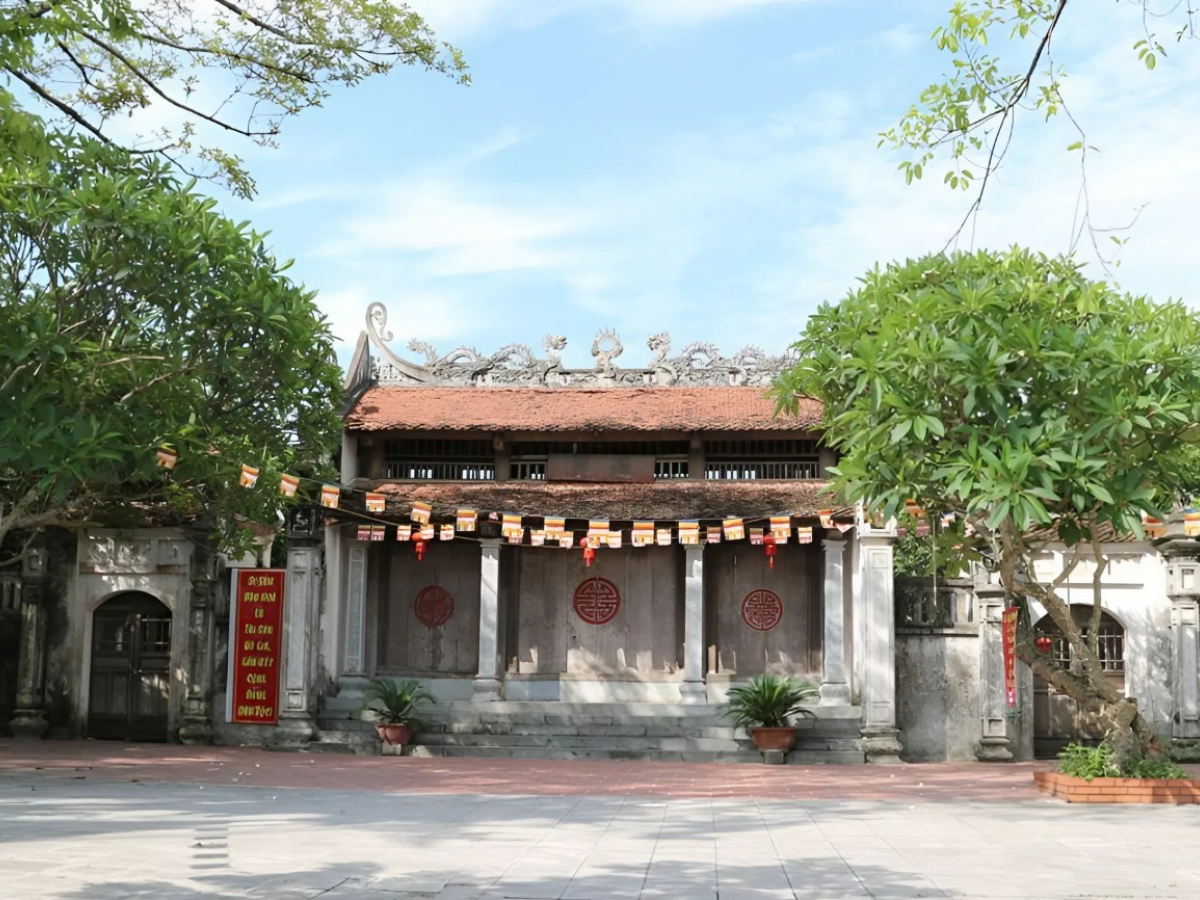
Truc Temple Festival and the unique Hat Dam ritual. (Source: Collected)
The Truc Temple Festival is held annually on the 6th day of the 2nd lunar month. Besides solemn ceremonies and lively folk games, Hat Dam is always an indispensable ritual. The smooth melody of the traditional tune not only strengthens community spirit but also preserves the cultural source of the Northern Delta region, reflecting the rich spiritual life of the local people.
2. Artistic characteristics of Hat Dam Quyen Son
2.1. The Hat Dam troupe and member selection criteria
The selection of members for the Hat Dam Quyen Son troupe is sacred and strict, much like a ritual. The special point is that only unmarried young women or widows in the village are allowed to participate. Therefore, every year, Quyen Son village selects young, pure girls, aged 12 to 20, with clear voices and pretty appearances to join the Dam troupe.
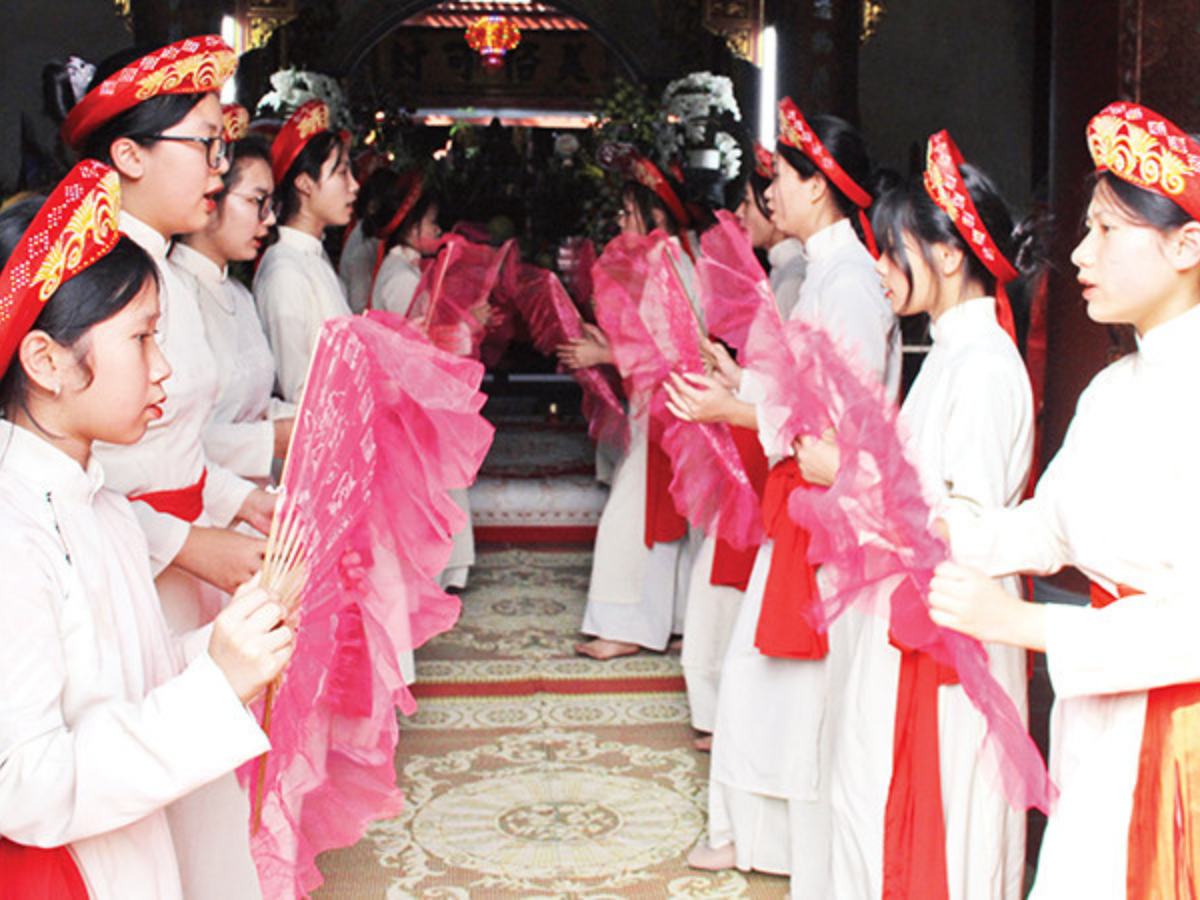
The criteria for selecting members of the phuong Dam are very strict. (Source: Collected)
A singing group usually has 30 members or more, led by a master – a person who is both elderly and talented in singing, especially with a good memory for songs.
Teaching is carried out within the community, in a simple and natural way. Veteran masters directly guide the younger generation in each line of song and dance move. This process is not merely about learning art, but also about cultural continuation, ensuring the flow of Hat Dam is maintained sustainably, without breaking or deviating through generations.
2.2. Performance Format and Hat Dam Space
Annually, from the 1st to the 6th day of the 2nd lunar month, the people of Quyen Son village solemnly organize the Dam festival at Truc Temple. The Hat Dam festival typically includes three main groups of activities: worship rituals and processions; performance activities such as competitions, sports, shows, and games; and finally, feasting and enjoying the blessings of food.
While the dignitaries handle the deity worship rituals, the Dam group – under the guidance of the master – performs the dance and singing to worship the deity, harmonizing gracefully with the solemn atmosphere of the ceremony. The Dam girls line up in two rows, walking in an artistic procession from the communal house yard into the central hall, the inner sanctuary, and then back out, moving in opposite directions.
As they emerge from the inner sanctuary and central hall, they dance and sing the characteristic Dam melodies. The Hat Dam dance and singing to worship the deity of Quyển village is practiced in two ways: interwoven with the worship rituals or performed independently, replacing the vigil ceremony.
2.3. Call-and-Response Art and Melody Structure
The heritage of Hat Dam Quyen Son possesses a rich repertoire of 38 melodies, creating a unique mark for this art form. There are joyful, sad, tragic, heroic, long, short, smooth, and rugged melodies, all fully reflecting the spectrum of inner emotions, the economic - social life, and the beliefs of the ancients through these songs and dances.
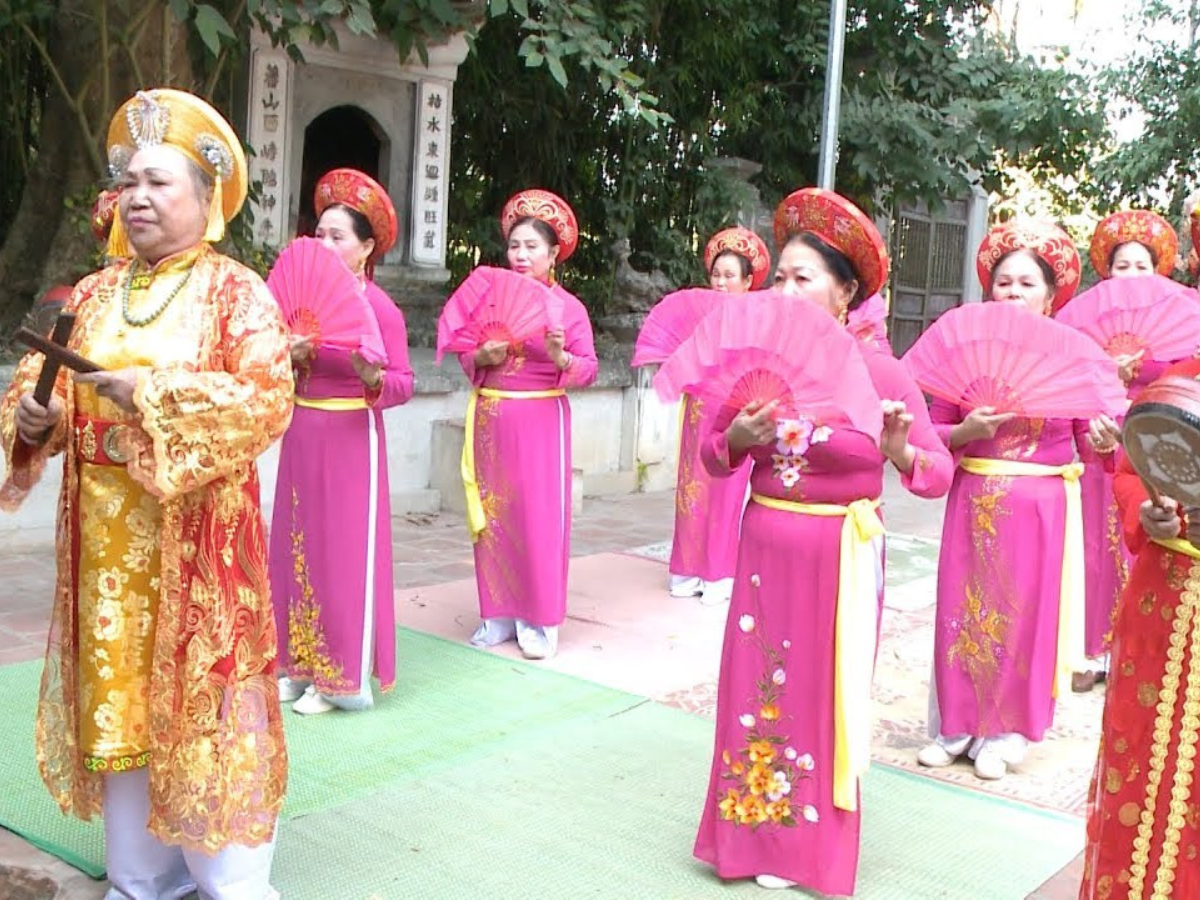
Hat Dam Quyen Son possesses a treasure trove of 38 rich melodies. (Source: Collected)
Each melody is associated with a song; some songs have only a few simple verses about a specific event or object, while others use ancient folk verses. Hat Dam was originally a genre of music offered to deities, bearing a strong rustic, simple, familiar, easy-to-listen, easy-to-sing, and easy-to-remember character for farmers closely tied to the fields.
The content of Hat Dam is extremely diverse: from praising the merits of deities, teaching moral principles, evoking love for the homeland, to verses related to romantic love and the rhythm of daily labor. Particularly, the most outstanding feature of Hat Dam is its group singing style, often in the form of call-and-response singing – a method that conserves energy and voice while increasing cohesion. This singing style has created its unique identity, making Hat Dam unlike any other folk music genre in the Red River Delta region.
2.4. Props, Costumes, and Performance Movements
During performances, the elder performer usually wears a yellow or red skirt and shirt, standing solemnly before the altar of the deity, while the "performers" are young, pure girls from the village, who will form two lines standing on either side.
The girls' costumes are very graceful: brown five-panel ao dai, or white, blue ao dai; combined with a linh skirt, a peach-colored bodice, a hoa ly colored belt, and a mo qua headdress. Hat Dam does not use accompanying musical instruments; the elder performer only holds a pair of bamboo castanets to keep the rhythm – sometimes fast, sometimes slow – depending on each melody, both keeping the rhythm and directing. When dancing, the girls use colored paper fans to express the song's content.
To avoid confusion during the performance, the elder performer will sing a sample and demonstrate movements, after which the girls will follow in unison. The dance movements in Hat Dam are generally quite simple, not elaborate or complex, but they still exude rhythm and harmony.
3. Hat Dam Quyen Son: Cultural and Social Values
3.1. Humanistic Values, Community Vitality
In the spiritual life of the people of Quyen Son village, Hat Dam Quyen Son is considered an indispensable "spiritual food". The melodious tunes not only bring joy during festivals but also serve as a bond connecting generations in the village, from the elderly to the young.
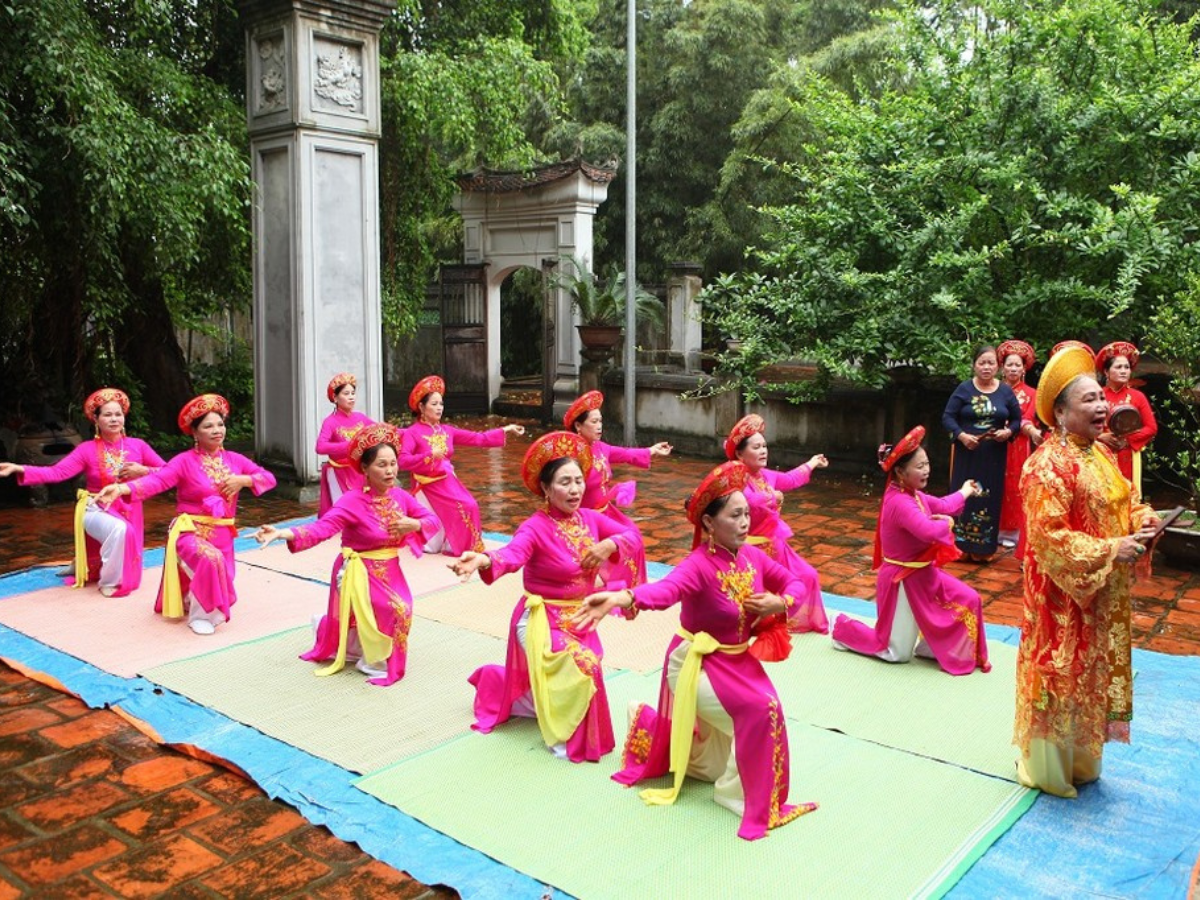
Hat Dam heritage carries profound humanistic value. (Source: Collected)
The educational value of Hat Dam is clearly shown through the content of the melodies - conveying moral principles, patriotism, filial piety traditions, and love for the homeland. This is a unique way for the Quyen Son village community to maintain national identity and preserve precious spiritual values amidst the flow of modernization.
The strong vitality of this art form is also reflected in its ability to self-adjust and adapt to the times while retaining its original spirit. Hat Dam Quyen Son is both a repository of collective memory and a space for exchange and community bonding during the period of integration.
3.2. National Intangible Cultural Heritage Title
The year 2019 marked an important milestone when Hat Dam Quyen Son was officially recognized as a National Intangible Cultural Heritage. This title is not only a worthy recognition but also opens up new opportunities for the preservation and promotion of the heritage's value.
Being included in Vietnam's heritage map is of special importance, creating conditions for Hat Dam to be prioritized in state support and preservation policies. At the same time, this title enhances the status of this folk art in the international community, creating a premise for more extensive cultural exchange activities.
4. Experience attending and exploring Hat Dam Quyen Son
4.1. Time and schedule of Truc Temple festival and events featuring Hat Dam
The best time to enjoy Hat Dam Quyen Son is during the Truc Temple festival, which takes place from the 1st to the 6th day of the 2nd lunar month annually. Throughout the 6 consecutive days, visitors will immerse themselves in the festive atmosphere with full solemn rituals and the most outstanding artistic performances.
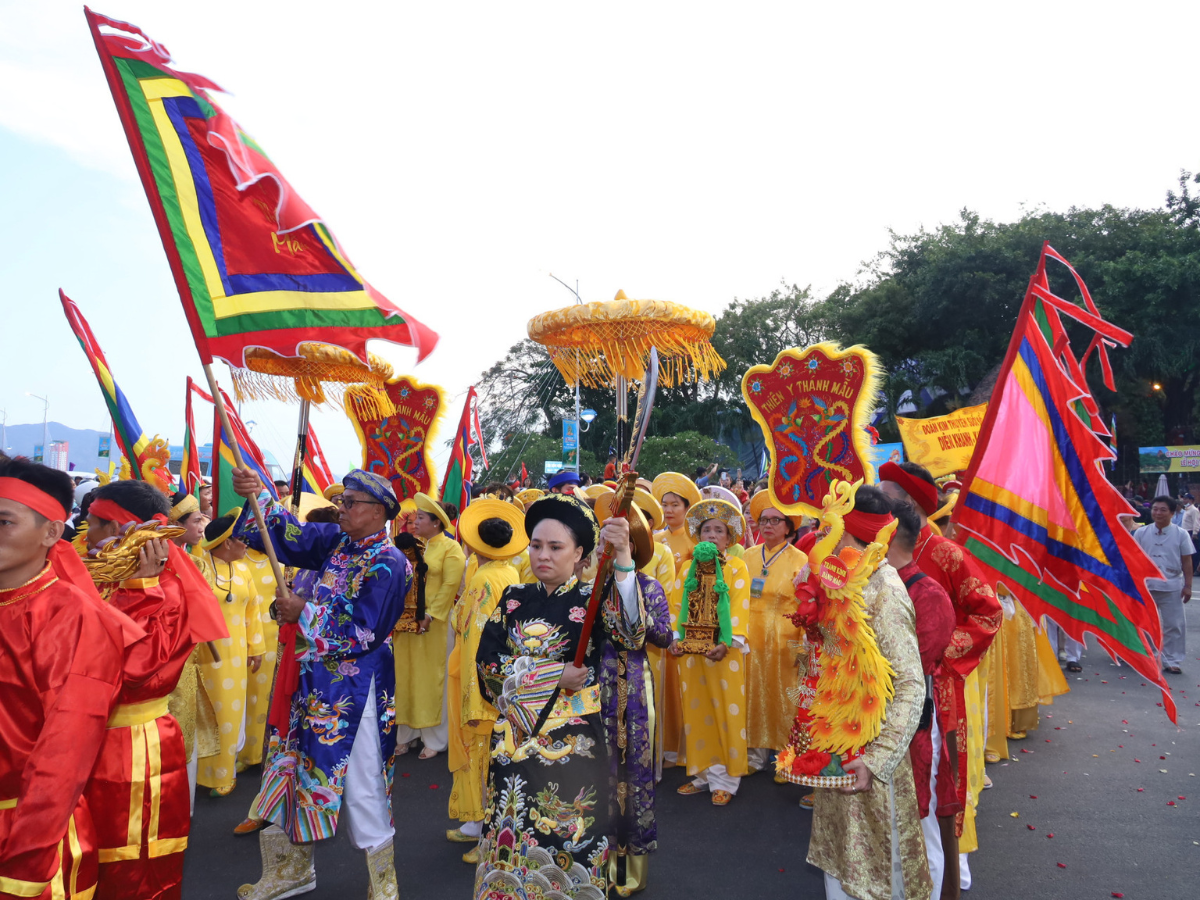
Hat Dam Quy Son is the “core essence” of all rituals. (Source: Collected)
Interestingly, Hat Dam performances are usually held in the evening. In the gentle breeze and shimmering light from the temple lamps, the space becomes mystical, making the experience even more profound and unforgettable. Therefore, visitors should arrange to stay overnight in the area to not miss the most impressive performances.
4.2. Combine sightseeing and nearby tourism
The journey to explore Hat Dam Quy Son will become richer and more complete if combined with visits to prominent nearby destinations. Not far from Truc Temple is Tam Chuc Pagoda – a massive Buddhist complex, promising a unique spiritual experience. For those who love nature and geology, Ngu Dong Son will offer a journey to explore a fascinating cave system. After the bustling festival days, Thanh Thuy hot spring is an ideal resting point to relax and recharge.
Especially, Sun World Ha Nam offers a modern entertainment space, suitable for families and young groups who want to balance tradition with contemporary vibrancy. This combination creates a diverse travel itinerary, meeting the experiential needs of various ages and preferences.
Hat Dam Quy Son is not only a precious intangible cultural heritage but also a gateway to the rich spiritual world of Vietnamese people. Arrange your time to attend the Truc Temple festival to fully appreciate the beauty of this unique folk art in 2025!

